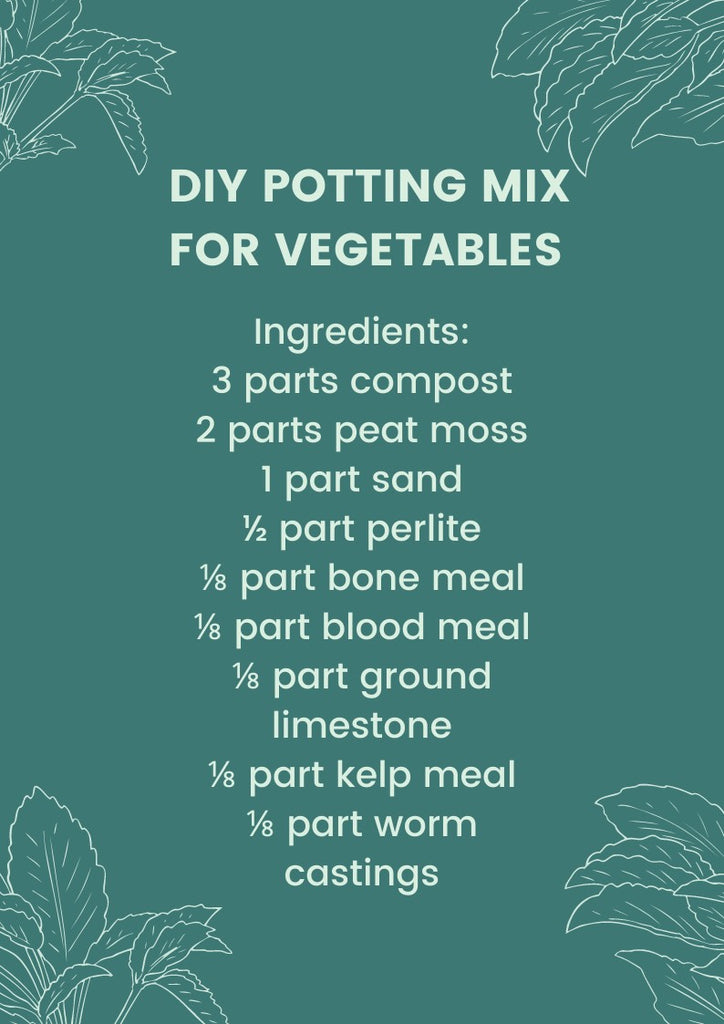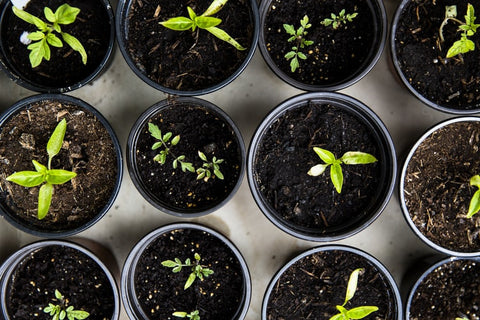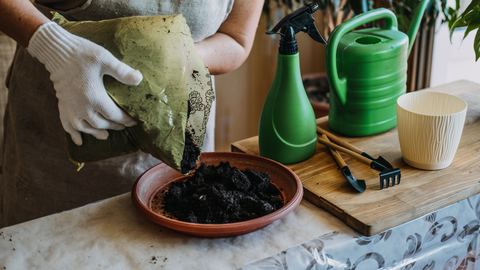So you’ve finally given indoor gardening a shot, but now, you’ve come to realize that growing herbs and vegetables indoors is a lot different than growing them outside in an open garden. They need more nutrients and TLC to grow big and strong – and that’s why it’s so important to fill up their pots with some good potting mix. But what is potting mix exactly? And how is that different from the soil in your backyard? Is there a way that you can make it by yourself? Well, shall we ‘dig’ in?
Potting Mix vs. Compost: What’s the Difference?
It’s easy to get confused with all these different terms, especially if you’re new to gardening, so we’re gonna break it down for you and let you know how to distinguish these two from each other.

Potting Mix
Potting mix is usually used by gardeners to help potted plants grow indoors or start seedlings. It is also commonly used in container gardening. Potting mix can contain a mixture of different organic and inorganic substances such as peat moss, ground-up tree bark, vermiculite or perlite (which is volcanic glass), and compost. The lightweight materials blended together are perfect for providing better aeration, moisture retention, and drainage. Potting mixes are usually modified to accommodate the needs of specific plants. For example, if your plant requires more aeration, the potting mix should contain more bark. If your plant needs good drainage, add more sand or perlite. If you add compost to the potting mix, it is usually sterilized to reduce biological activity. The reason for this is that soil in pots works in totally different conditions, and if the biological activity is too high, it can cause rotting roots and imbalanced nutrition.

Compost
Compost is frequently used to add nutrients to weak soil. It is a perfect soil amendment for open space gardening, especially for vegetable gardens and woodland plants. Compost is usually made up of organic materials such as food scraps (fruit and vegetable peelings), plant trimmings (dried leaves and twigs), and even animal manure or worm castings. The materials mixed together compost and break down into a rich soil with lots of microorganisms. When added, this creates a healthy growing foundation for your garden because it loosens clay for healthy root penetration and increases water and nutrient retention in sandy/rocky soil. In contrast, potting mix has little to no beneficial effects on open garden soil.

How to Make Potting Mix
Making your own potting mix is a great way to save money because we all know that quality ready-made potting mix ain’t cheap! Aside from that, it helps you practice becoming more self-reliant and empowers you to choose more ethical and sustainable ingredients without all those hazardous chemicals. This can be incredibly satisfying because it also helps you build a deeper understanding of whatever it is you’re trying to grow. We’ve listed some easy DIY recipes down below that you can try making at home!
Best Potting Mix for Herbs and Vegetables
It is important to note that these recipes provide ratios rather than specific amounts. The size of the container you will use for measuring is entirely up to you, depending on how much potting mix you want to make. You can use a cup, a tin can, or a tupperware as a measuring guide for small to medium-sized projects. You can use a bucket, a shovel, or even a wheelbarrow for those larger scale ones.
For small batches, you can mix the potting mix in a bucket or a plastic container. For bigger batches, you can mix it in a wheelbarrow or on a flat concrete surface. Use your hands or a shovel to combine all the ingredients until they are nicely blended. Make sure to wet the potting mix by spraying on some water to make sure it’s not too crumbly, while also being careful not to wet it too much that it starts to clump up. You can store the potting mix inside a plastic bin, bag, or under a tarp once you’re done.


So now that you know how to make your own potting mix, there’s nothing stopping you from growing your own indoor garden! And lucky for you, we’ve got an Herb Seed Collection and a Vegetable Seed Collection that will be perfect for your indoor edible gardening project. Check out our shop now!








